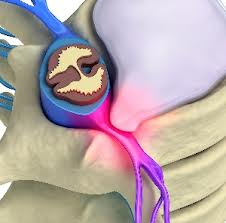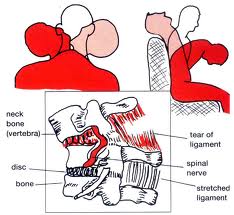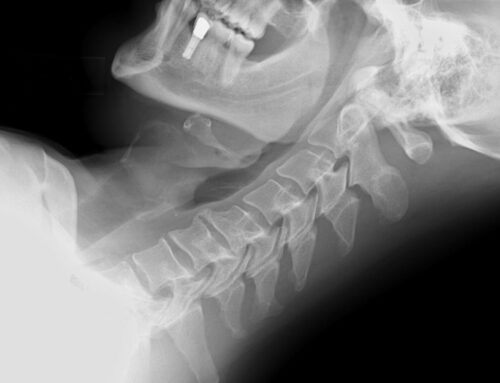By William Bill Hurst -Your Indianapolis, Indiana Car Accident Lawyer

The Mayo Clinic defining “whiplash” lists the usual immediate symptoms as spine pain and stiffness, headaches (most commonly at the base of the skull), dizziness, blurred vision and fatigue. In more serious cases of “whiplash” patients also experience difficulty concentrating, memory problems, ringing in the ears, sleep disturbances, and irritability. The Clinic states that people who experience whiplash generally recover in the first 2 or 3 months. Some will have pain for several months, possibly up to two years. However, the Mayo Clinic confirms that in some people injured in accidents chronic pain is permanent even though no abnormality can be found to explain the persistent neck pain.
When the injured party arrives at the hospital, usually there are no objective signs of damage to the neck, nothing seen on X-rays and there are no clinical signs of nerve damage. While many physicians (and certain Insurance Claim Adjusters) believe that this injury will not persist for more than a few weeks, it is well known and documented that a significant portion of the neck injured suffer 
Often during the first few weeks following an accident the accident victims who suffered neck personal injuries often do not seek help and often do not share their concerns. This is likely do to in part the reputation that whiplash is minor and short term. Unfortunately a significant portion of the complaints are persistent and difficult to treat. A recent study in the Journal of Rehabilitative Medicine dated April, 2009 41(b):353-9 indicates that in a significant portion of whiplash cases where the whiplash symptoms do not abate and if they persist for a period of five (5) years or so depression reactions are frequently reported, associated with the chronic condition.
“Whiplash” and its associated disorders have become a burdensome health problem in the U.S. which has resulted in terms of treatment and cost and loss of time in the labor force in serious economic consequences. One-third of the persons involved in rear end vehicle collisions report neck pain and other symptoms of varying severity. It is estimated that in the United States the economic impact of whiplash and associated disorders is in the area of $4.5 billion per year.
In Indiana there is a public perception (fueled by liability insurance company propaganda) that “whiplash” is associated with people who are simply trying to get a financial gain; and in some instances are attempting to be rewarded for “faking”. Because of the subjective nature of the symptoms of whiplash it is often difficult to refute this defense oriented position on a scientific or medical basis as the symptoms often cannot be objectively demonstrated.

For an in-depth review of the anatomical structures involved in a “whiplash” type injury- see Whiplash Causes Neck Pain and Other Disorders Resulting in Complex Condition
Over the years I have discussed with hundreds of doctors what they believe is the cause of long-term “whiplash” symptoms. Most physicians with expertise in the area of neck sprain and strains indicate that they believe that there are microscopic tears in the tissue of the neck and upper back which occur in the acceleration-deceleration whipping of the neck and head. When these tears heal they leave small scar tissue which is permanent and can interfere with nerves in the area of the scaring.
Statistically it is believed that those who are plagued with whiplash symptoms generally will take no longer than 6 months to heal; however approximately 20% of the patients do develop chronic pain and only 82% will recover completely after 2 years. Surgery is rare most of the time exercise and conservative medical treatment are enough to show significant improvements allowing patients to return to their normal activities but curing them. Click here to read more about whiplash.
While “whiplash” usually refers to a neck sprain or strain of the soft tissues, but it can also refer to an injury to cervical spine and discs which is often diagnosed as cervical facet joint pain. Treatment for this injury differs from a soft tissue injury; and in severe cases van evolve a facet nerve block which is an injection into the facet joint to determine whether or not the pain in that area can be eliminated. Should that occur, it would diagnostically tell the physician that further treatment of the area affected can reduce or eliminate pain. Other than injections, treatment of cervical joint pain can involve a number of different types of treatment other than physical therapy and medicine; other more invasive treatment could include Radiofrequency Neurotomy – a minimally invasive surgical procedure using low level electrical stimulus to locate the exact facet nerve causing the pain and then severing that particular facet nerve.

Although whiplash symptoms may be delayed, as soon as they appear you should immediately see a doctor. While it is important to listen and treat your symptoms, if you simply “get it out”; A delay between an auto accident and treatment will allow an insurance company to argue that you don’t actually have the injury or it was caused by something other than the crash; and the companies always do raise this issue.
If you have suffered a whiplash injury in an accident that was not your fault you may be entitled to recover money damages for your injuries. Compensation may include medical bills, lost wages and other damages such as pain and suffering. Clearly the amount that you can recover will vary depending upon the severity of your injuries and the length of time for your treatment and recovery. Rather than take an early offer the insurance company keep in mind that in a significant percentage of cases whiplash injuries become chronic or even permanent. Certainly you don’t want to accept an offer that might seem generous at the moment and turn out to be far less than your actual cost for future medical expenses.
If you have a significant neck injury “whiplash injury” you should contact an experienced lawyer in our office so we can evaluate your case; and if appropriate make the claim within the limited period of time allowed. We have successfully represented thousands of clients who suffered neck and spinal injuries and we are available for an initial free consultation to discuss your case call us at 1-800-636-0808. If we take your case we are not paid unless we recover for you.





